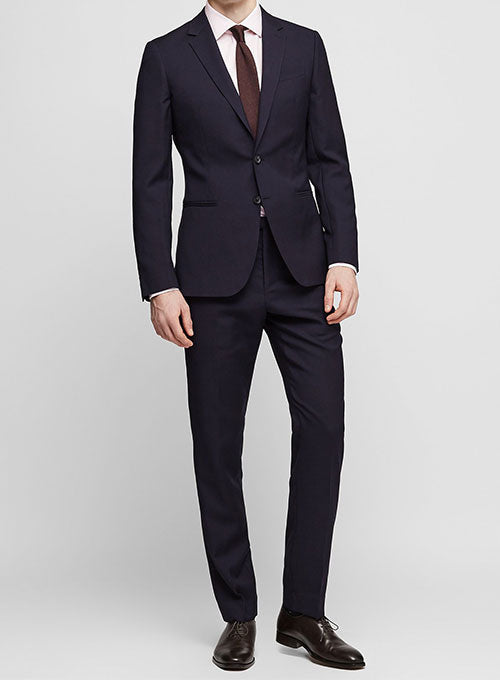Tailored Suits Perth: Raise Your Design with Custom Suits
Wiki Article
Comprehending the Tailoring Refine: From Fabric Option to Last Suitable for the Perfect Closet
The customizing procedure is a complicated interplay of art and scientific research, starting with the vital choice of fabric selection and culminating in the exact adjustments of final fittings. Each textile type brings unique top qualities that influence not only the visual allure yet additionally the garment's long life and viability for various events.Relevance of Material Choice
Selecting the best fabric is essential in the tailoring process, as it straight influences the convenience, durability, and overall visual of the last garment. The option of fabric sets the structure for the garment's performance, performance, and design. Various textiles have special residential or commercial properties, such as breathability, stretch, and weight, which can dramatically influence just how the garment drapes and fits the body.
A customized piece made from a proper textile not just showcases workmanship however likewise elevates the user's self-confidence. Consequently, understanding the nuances of fabric option is extremely important for any customizing endeavor. It makes certain that the last product not just satisfies the aesthetic wishes of the customer yet also aligns with practical demands, thus accomplishing a harmonious equilibrium between form and function in the tailored wardrobe.
Sorts Of Fabrics and Their Uses
Comprehending the various sorts of fabrics readily available is essential for making informed decisions during the customizing procedure. Each textile possesses special features that determine its suitability for certain garments and events.Cotton, understood for its breathability and softness, is optimal for sportswear and summertime clothing. Its versatility permits it to be tailored right into every little thing from t-shirts to outfits. Wool, on the various other hand, is preferred for its heat and structure, making it an outstanding option for official suits and outerwear. Its all-natural elasticity assists garments preserve shape with time.
Silk shows luxury and is light-weight, making it best for eveningwear and fragile blouses; however, it requires careful handling because of its frailty. Linen, with its distinctive surface, is a preferred selection for warm environments, offering a crisp and ventilated feeling, however it wrinkles easily, which might affect the garment's look.
Artificial materials, such as polyester and nylon, offer sturdiness and resistance to creases, making them suitable for day-to-day wear and active clothing. Comprehending these textile kinds and their buildings permits better decision-making, ensuring that each customized piece not only fits well however likewise straightens with the designated purpose and celebration.
The Tailoring Methods Clarified
The art of tailoring depends on a variety of techniques that change fabric right into well-fitted garments. Central to this procedure is pattern composing, where a tailor produces templates based upon the client's measurements and preferred style. This first step makes certain that the garment will fit the wearer properly before any type of cutting takes place.Once patterns are established, reducing methods come into play. Precision is extremely important as errors can result in misfitting garments. Tailors commonly make reference use of numerous reducing techniques, such as single-layer reducing for detailed designs and multiple-layer reducing for effectiveness on common patterns.
Basting is one more important method, enabling tailors to temporarily sew material assemble for an initial installation (wedding suits perth). This technique supplies the possibility to analyze the drape and overall shape before last stitching
Seaming strategies, including flat-felled joints and French joints, improve the garment's durability and aesthetic appeal. Tailors also use methods such as interfacing and cushioning to give structure and form to details areas, like collars and shoulders.
Last but not least, completing methods, including hemming and edge ending up, guarantee the garment's longevity while offering a sleek appearance. With each other, these strategies create the backbone of efficient customizing, causing elegant, tailor-made garments.

Suitable Modifications and Considerations
After the initial tailoring strategies have been applied and the garment is constructed, fitting modifications become vital to attaining the perfect fit. These modifications attend to different facets of the garment, guaranteeing it contours to the wearer's body form and enhances overall look.
The surge of pants is one more vital element; it ought to sit pleasantly above the hips without creating pain, permitting convenience of activity. Hemming lengths for both trousers and skirts must reflect the wearer's favored style while appreciating proportions.
Furthermore, focus should be offered to the rear of the garment, making certain that there are no unpleasant pulls or excess material - wedding suits perth. Each change needs to be carefully considered, as even small changes can significantly influence the general fit and visual of the tailored item, ultimately bring about a wardrobe that exudes self-confidence and elegance
Preserving Your Tailored Clothing
Proper maintenance of tailored garments is necessary to preserving their fit and appearance in time. To guarantee durability, regular cleansing is paramount. Always adhere to the care tag instructions, which might advise completely dry cleaning for delicate fabrics or equipment cleaning for more resilient materials. Prevent constant laundering, as this can wear down the textile and change the garment's shape.Storage space is equally essential; use padded hangers for jackets and layers to preserve shoulder framework, why not check here and shop pants folded neatly or hung to stop creasing. Secure garments from direct sunshine, which can fade colors and damage fibers.
Furthermore, regular assessments for minor repairs can stop larger problems. Look for loose buttons, tearing seams, or indicators of moth damages, attending to these problems promptly to maintain the garment's stability.
Lastly, consider seasonal turning. Using tailored items in small amounts permits fabrics to recoup, prolonging their lifespan. By executing these maintenance techniques, you can ensure that your customized garments remain as pristine as the day you first wore them, boosting your optimal wardrobe for years to come.
Final Thought
The customizing process, encompassing textile choice, skilled methods, and precise fitting modifications, plays an important duty in developing garments that improve both comfort and design. Understanding the significance of upkeep prolongs the life of tailored garments, strengthening their value over here in a well-curated closet.Report this wiki page